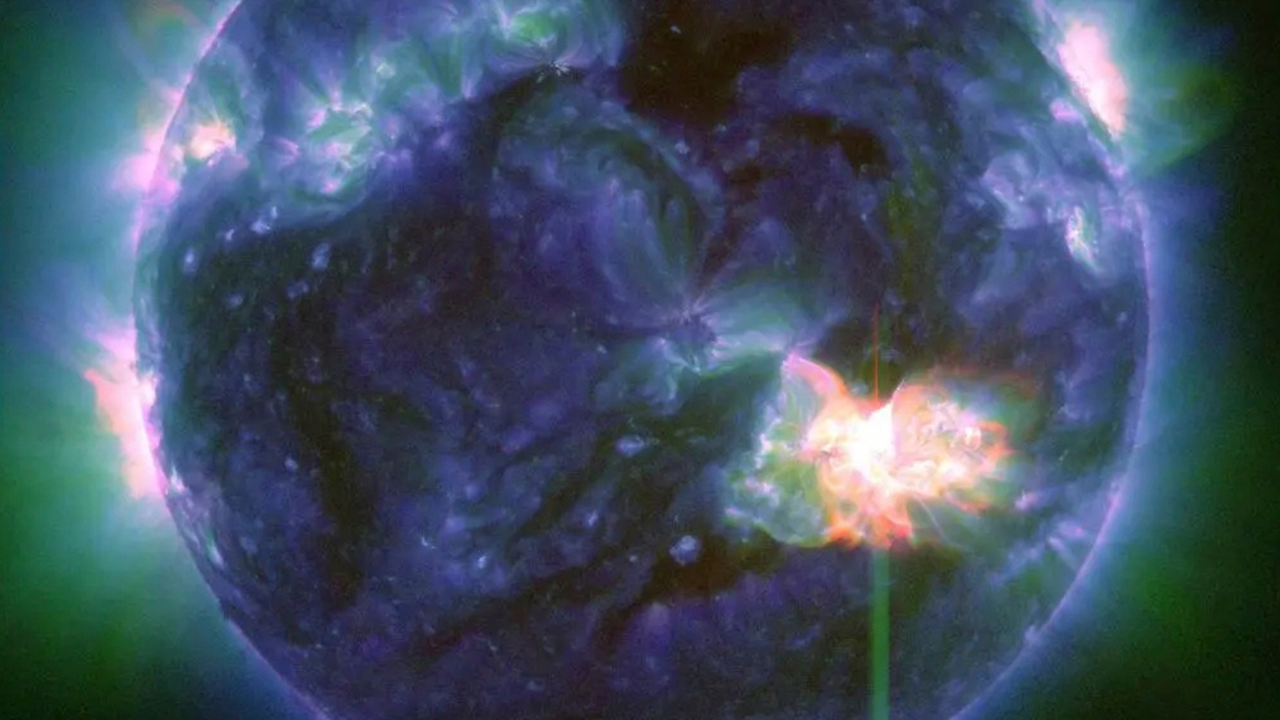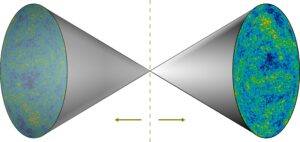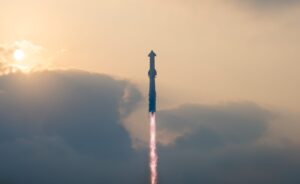This image provided by NASA shows a solar flare as seen in the bright flash at lower right, taken by NASA’s Solar Dynamics Observatory on May 9, 2024. (NASA/SDO via AP)
CAPE CANAVERAL, Fla. (AP) — An unusually strong solar storm battering Earth caused stunning displays of color in the Northern Hemisphere sky early Saturday, with no immediate reports of power or communications outages.
The US National Oceanic and Atmospheric Administration issued a rare severe geomagnetic storm warning when a solar flare reached Earth on Friday afternoon, hours earlier than expected. The effects of the Northern Lights, which were prominent in Britain, were set to continue over the weekend and possibly into next week.
Many across the UK shared phone pictures of the lights on social media early on Saturday, with the phenomenon seen as far south as London and southern England.
There were “top to tail” sightings across the country, said Chris Snell, a meteorologist at the Met Office, Britain’s weather agency. He added that the office had received photos and information from other European locations, including Prague and Barcelona.
NOAA warned operators of power plants and orbiting spacecraft, as well as the Federal Emergency Management Agency, to take precautions.
“For most people here on planet Earth, they won’t have to do anything,” said Rob Steenberg, a scientist at NOAA’s Space Weather Prediction Center.
The storm could produce aurora borealis as far south in the US as Alabama and northern California, NOAA said. But it was difficult to predict, and experts stressed that it would not be the dramatic curtains of color usually associated with the northern lights, but rather splashes of greenish hues.
“This is really the gift of space weather: the aurora borealis,” Steenberg said. He and his colleagues said the best views of the auroras can be obtained from phone cameras, which capture the light better than the naked eye.
Take a picture of the sky and “there might actually be a nice little treat for you,” said Mike Bettwee, the forecast center’s operations manager.
The most intense solar storm in recorded history, in 1859, produced auroras in Central America and possibly even Hawaii. “We don’t expect that,” but it could come close, said NOAA space forecaster Sean Dahl.
This storm posed a risk to high-voltage transmission lines for power grids, not the power lines typically found in people’s homes, Dahl told reporters. Satellites can also be affected, which in turn can disrupt navigation and communication services here on Earth.
An extreme geomagnetic storm in 2003, for example, knocked out power in Sweden and damaged power transformers in South Africa.
Even when a storm is over, signals between GPS satellites and ground receivers can be scrambled or lost, according to NOAA. But there are so many navigation satellites that any outages shouldn’t last long, Steenberg noted.
The sun has sparked strong solar flares since Wednesday, resulting in at least seven bursts of plasma. Each eruption, known as a coronal mass ejection, can contain billions of tons of plasma and magnetic field from the sun’s outer atmosphere or corona.
The flares appear to be associated with a sunspot that is 16 times the diameter of Earth, NOAA said. It’s all part of solar activity, which increases as the sun nears the peak of its 11-year cycle.
NASA said the storm posed no serious threat to the seven astronauts aboard the International Space Station. The biggest concern is increased radiation levels, and the crew could move to a more shielded part of the station if needed, according to Steenberg.
The increased radiation could also endanger some of NASA’s science satellites. The highly sensitive instruments will be turned off if necessary to avoid damage, said Antti Pulkinen, director of the space agency’s heliophysics division.
Several sun-focused spacecraft watch all the action.
“These are exactly the things we want to monitor,” Pulkinen said.
___
The Associated Press Health and Science Division is supported by the Science and Education Media Group of the Howard Hughes Medical Institute. AP is solely responsible for all content.



